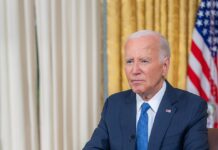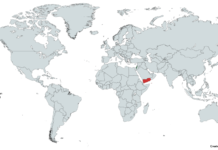Yesterday, Taiwan’s defense ministry reported a new incursion by Chinese military aircraft across the sensitive median line. This incident coincides with China conducting combat drills involving landing craft, signaling heightened military readiness. Over the past few years, China has increased its military maneuvers around Taiwan, which it views as its territory—an assertion firmly rejected by the government in Taipei.
The Taiwanese defense ministry observed 14 Chinese military aircraft crossing the median line of the Taiwan Strait, approaching as close as 41 nautical miles from Keelung, a major northern Taiwanese port city with a significant naval base. This median line has traditionally acted as an unofficial border between Taiwan and mainland China, though Chinese military aircraft have frequently crossed it in recent years. China maintains that it does not recognize the existence of this line.
The Chinese Eastern Theatre Command, responsible for the region encompassing Taiwan, shared images on its WeChat account of naval ships performing what it described as live combat landing drills. The images depicted ship-mounted guns firing and vessels operating in formation. The text accompanying the photos stated, “The vanguard of the landing team are always ready to fight,” indicating a state of combat readiness.
Amid these developments, Taiwan’s top security officials are on high alert for possible extensive military exercises by China following the upcoming inauguration of President-elect Lai Ching-te. Tsai Ming-yen, Director-General of Taiwan’s National Security Bureau, noted new tactics by China, including nighttime combat patrols and the use of landing ships and minesweepers.
This increase in military activities is not limited to the air and sea near Taiwan. China’s coast guard has also intensified its patrols around the Taiwan-controlled Kinmen islands, located near the Chinese coast. This uptick in patrol activity began in February following a dispute over the death of two Chinese nationals who were fleeing Taiwan’s coast guard in restricted waters.
Taiwan’s forthcoming leadership change adds another layer to the geopolitical tensions. Lai Ching-te, set to be inaugurated on May 20 after a January election victory, is viewed unfavorably by Beijing, which perceives him as a separatist threat. Despite Lai’s and outgoing President Tsai Ing-wen’s rejections of Beijing’s sovereignty claims—insisting that only Taiwan’s people can decide their future—China has dismissed Lai’s repeated offers for dialogue.
The broader regional context also includes recent incidents in the South China Sea, where the Philippines summoned a senior Chinese envoy to protest a water cannon incident that damaged Philippine vessels. Such incidents underscore the ongoing territorial disputes in the area, which involve multiple countries and are complicated by military exercises conducted by external powers like the United States and the Philippines.
As these developments unfold, the situation remains tense, with Taiwan and China continuing to showcase their military capabilities in a region fraught with historical and strategic complexities. The global community watches closely, aware that any misstep could escalate into a more serious conflict.
Image is in the public domain.









